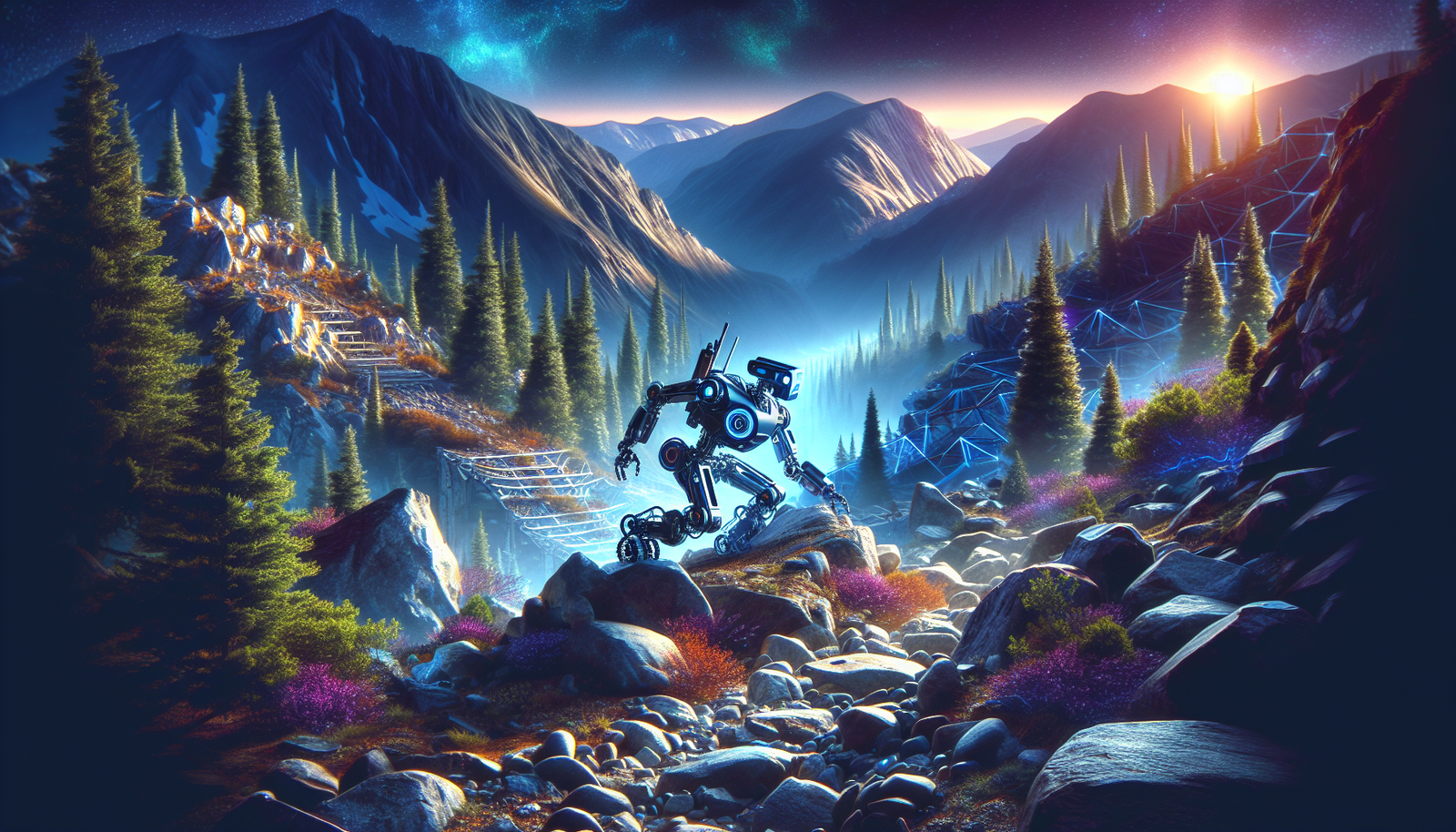Robotic innovation reaches a new peak thanks to the zero-shot strategy. This revolutionary paradigm gives robots the unique ability to adapt to complex environments without requiring additional sensors. Each new mission in challenging terrain thus becomes an exciting challenge, free of prior training. The *spontaneous learning ability* of these machines redefines the limits of modern robotics. These algorithms allow for the application of nature-inspired models to optimize autonomous navigation. An unprecedented technological advancement, facilitating the integration of robots into varied realities.
The Zero-Shot Strategy in Robotics
Two researchers from the universities of Leeds and London have developed an innovative method enabling robots to navigate effectively across varied terrains. This approach relies on the strategy known as zero-shot, which eliminates the need for additional sensors or prior training in challenging environments.
A Significant Advancement
Recent advances in robot programming, particularly quadrupedal robots, have evolved from a rigid framework to systems utilizing neural networks and machine learning techniques. This new strategy enables overcoming the limitations of previous methods, which often imposed a dependency on unique walking strategies.
Adaptability Inspired by Nature
Researchers Joseph Humphreys and Chengxu Zhou suggest a model that mimics how quadrupedal animals move in their environment. Their approach promotes the implementation of natural reflexes, such as running, trotting, or jumping, depending on the terrains encountered.
Analyses show that trotting is preferable in unpredictable terrains, including obstacles like rocks and branches. On the other hand, running proves effective on flat surfaces, while jumping is required in slippery conditions.
The Biological Gait Programmer
To allow the robot to adapt its gait to its immediate environment, the team developed a biological gait programmer (BGS). This system uses a βL coding within the observable space of the robot, leveraging procedural memories and behavioral adjustments.
This innovation enhances adaptability, facilitating the updating of the robot’s gait based on environmental conditions. This is particularly relevant in situations not requiring additional sensors, thus enabling autonomous learning across various landscapes.
Tests and Results
Robots incorporating this new framework have undergone rigorous testing on varied and changing terrains. The results are promising, revealing an impressive capacity to overcome environmental challenges without specific prior training. Researchers believe this method opens new perspectives for robotic deployments in unpredictable and realistic contexts.
This advancement could revolutionize robotic operations in natural environments, offering a flexibility that has been previously untapped. The implications of this technology could manifest in various fields, such as exploration, research, and emergency interventions.
Future Perspectives
The ongoing implementation of the zero-shot strategy lays a solid foundation for more scalable and responsive robotics. Next steps include further research on enhancing learning capabilities in complex environments, without excessive dependence on traditional technologies.
A future where robots operate fully autonomously in complex terrains becomes feasible, relying on robust methodologies inspired by nature. This approach underscores the potential of advancements in artificial intelligence and robotics to transform our interaction with the physical world.
FAQ on the Zero-Shot Strategy for Robot Navigation
What is the zero-shot strategy in the context of robots?
The zero-shot strategy refers to the ability of robots to adapt and navigate in complex environments without having necessarily undergone prior training in this terrain, nor needing additional sensors.
How does the zero-shot strategy improve the adaptability of robots?
This strategy allows robots to change their locomotion behavior based on the environmental conditions encountered, leveraging procedural memories Pseudo-gait.
What types of environments can be traversed by robots using the zero-shot strategy?
Robots can navigate effectively through a wide variety of environments, even those with changing and unpredictable terrains, such as rocky or uneven surfaces.
Do robots require prior training to operate under the zero-shot strategy?
No, robots can be deployed directly into a new environment without prior training, allowing them to learn and adapt in real-time.
What are the benefits of not using additional sensors?
Eliminating the need for additional sensors reduces costs, complexity, and weight of robots, while simplifying their development and maintenance.
How do robots use procedural memory in the zero-shot strategy?
They integrate adaptive behavior adjustments based on experience gained in varied environments, allowing them to navigate with more agility and precision.
What are potential applications for robots using the zero-shot strategy?
These robots could be used in rescue missions, exploration of difficult terrains, or even in constantly changing urban environments.
Is the zero-shot strategy applicable to all types of robots?
While primarily developed for quadrupedal robots, the principles of the zero-shot strategy could potentially be adapted to other types of multi-legged or terrestrial robots.






